Introduction
Traditionally, content management systems managed both B2B and back-office platforms. Sites were also more or less “static” since content was usually focused on standardized products, homogeneous markets, and long life-cycles. All customers received the same content, usually served through a single channel.
As companies started to offer their B2B information through multiple channels, personalizing the information became crucial, along with the recommendation systems that assist customers in making their choices. The advent of new technologies expanded this further to include different devices such as websites, stores, wearables, Internet of Things, social networks, smart devices, or apps.
Additionally, organizations are creating more content than ever before, requiring them to deliver noiseless, personalized content to their B2B environments at the right time. With 47% of marketers already facing content challenges, many are turning to artificial intelligence (AI) powered content platforms, which can do whatever a human can and more.
Content-as-a-Service platforms
Since content management systems struggle with the multi-channel demand and accompanying changes in customer behavior, they, according to Gartner, have evolved into service-oriented models (Content-as-a-Service (CaaS)) seen as the most efficient way to deliver personalized content with the speed and accuracy needed to deliver content through the customer’s chosen channel.
There are several factors that might accelerate this transformation:
- Content explosion. Content volumes continue to increase, following the digital transformation of business, as marketing specialists spent more and more time developing new content or re-engineering existing ones.
- Continuously increasing channel variety. With IoT (Internet of things), customers may use any connected device to post B2B transactions. According to Wikipedia, connected “things” are going to reach 26 billion on 2020.
- Complexity of managing content environments. Content explosion and channel variety led to complex content environments to be handled using traditional Content Management Systems. In order to simplify the content so it can be easily manageable, content and presentation levels must be separated (channel agnostic platforms) and replaced with smart content and artificial intelligence.
- Effectiveness / agility. Content systems must be adaptable to changes in order to be effective. Service oriented models (CaaS) separate content from presentation, consume computer resources on demand, and deliver personalized content, making them the preferred choice for most businesses.
- Cost reduction. Traditional systems are large implementations that require high levels of computer resources. With content-as-a-service and cloud installations, companies can reduce cost with no high capital investment.
Smart content and artificial intelligence
With technology achievements and new cultures, such as social media, organizations started rethinking their existing business models and exploring new and improved ways to do business.
Smart content is content that is intelligently personalized to the visitor consuming it, regardless of the channel the consumer uses. The core principle is that personalized content better engages active and potential customers to lead them more efficiently and quickly than static content.
An artificial intelligence system can perceive its operating environment for a given input, and can provide the optimum real-time solution on its own. There are several types of intelligence that a smart content management system can use, such as rule based systems (bots), recommendation engines and machine learning capable systems.
Recommendation Engines (or systems) is a subclass of information filtering system that aims to predict the preference of a user into an item. It is seen as an intelligent and sophisticated salesman who knows the customer and can make intelligent decisions about what recommendations should benefit the customer the most. There are several types of recommendation engines depending on the algorithm applied for filtering such as collaborative filtering, content-based filtering, demographic filtering, etc., with the first two (and the combination of them) being the most widely used.
In B2B, a part of digital transformation and process automation is content personalization, supported by artificial intelligence modules such as recommendation engines. Depending on the customer’s segment(s), you can apply predictive analysis models, personalizing the presented content according to his/her expectations and needs.
Customer segmentation
Customer segmentation is a marketing technique that tries to group customers to “clusters” of similar customers. This definition of “similarity”, actuals forms the “grain” that a predictive model will run against, and accordingly creates personalized content . The more segmented the customer data are, the more accurate the prediction is and the more customized the customer needs are.
There are several types of customer segmentation in B2Bs, with the most common listed below:
- Firmographics which groups customers based on factors like business size, demographics, industry, and even other technologies used by organizations.
- Tiering, or how much customers match the goals of your business. Tiering along with firmographics produce an over-homogeneous group of samples that often lead to wrong results.
- Customer Needs, the most accurate but difficult way to define segments
- Behavior, based on factors such as loyalty, benefit expanding existing solution or risk to withdraw the existing solution etc.
- Customer sophistication, which may lead to a better understanding of customer needs etc.
- User intent, based on data generated via engagement with organization owned digital content or with content all over the internet.
Each of the type has its cons and pros with the final selection depending on business strategy. A combination of more than one segmentation may apply to cover all sales divisions or customer groups. You can achieve this by creating a matrix table that predicts the required content according to customer life cycle stages.
It has to be noted that a default segmentation that will result in default content should be always present.
Predictive analysis
Predictive analysis is performed against business rules in order to predict future events. In marketing, predictive analysis and analytics use techniques from data discovery, predictive models, statistics, artificial intelligence to analyze current data and make prediction about future, using all available B2B channels.
A predictive analysis process consists of the following subprocesses:
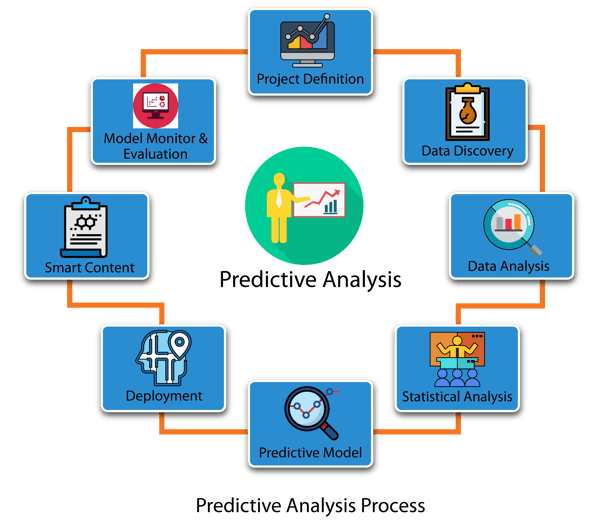
Project definition and governance
Define data to be used, metrics (KPIs) to be applied in analytics. Define the project governance.
Data discovery and data analysis. Statistical analysis.
Customer data can come from various sources:
- Collected directly from internal data sources, such as CRM or back-office, social media, or website behavior (first party data). These are cost free data but often out of desired scale
- Someone else’s first party data (second party data). This implies an extra cost.
- Someone else’s data, collected by a data collector service provider (third party data). These also require an extra cost but they are properly scaled
In addition, Customer data may be structured (e.g. age, customer group, credit limit etc.) or unstructured (free text, social behavior).
Data discovery consists of the process of discovering that data, extracting information from them, identifying possible anomalies and validating them, and storing them in data warehouse. You can then model, discover, segment, and apply intelligent correlation patterns to the consolidated data.
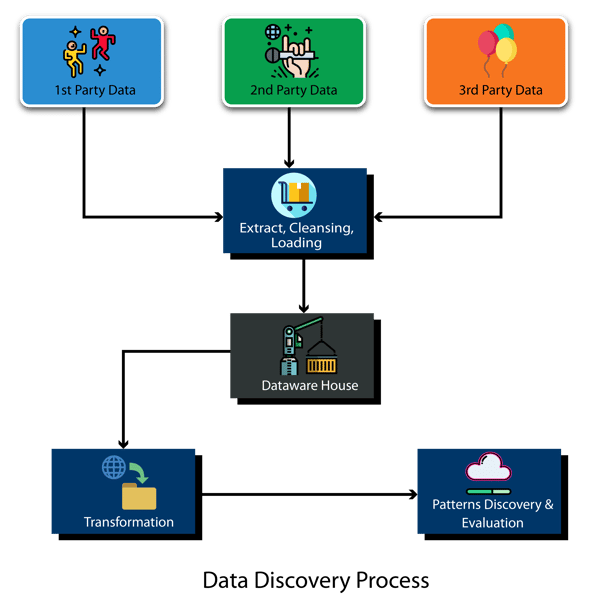
Predictive modeling. Model deployment, monitor and evaluation
You apply predictive modeling to achieve the best prediction of the probability of an outcome. The outcome depends on the data and statistics analysis previously applied and the patterns discovered.
Predictive model lifecycle consists of the following subprocesses :
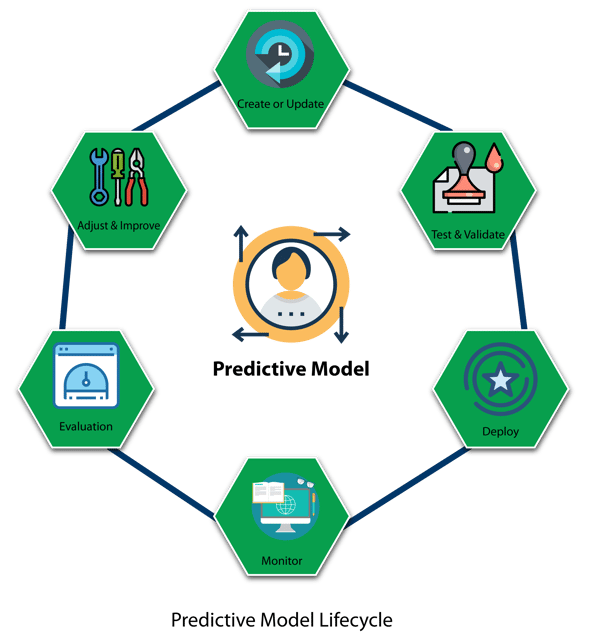
There are several algorithms, based on probability and non-deterministic mathematics, that you can apply to reach the optimum prediction. These may vary from simple methods such as linear regression or to more chaotic ones such as neural networks (e.g. Bayesian filters).
One point to note is data efficiency, i.e. necessary data volumes to not only run the model, but to also build and test it. In recommended systems, this is called cold start where there is no sufficient data for the model to run, and thus no prediction could be delivered.
Conclusion
Smart content platforms engage and lead customers by personalizing each customer’s interaction across any channel. Along with AI-powered personalization, they are able to deliver content - rich, accurate, and quick personalization giving a competitive edge to the organization.

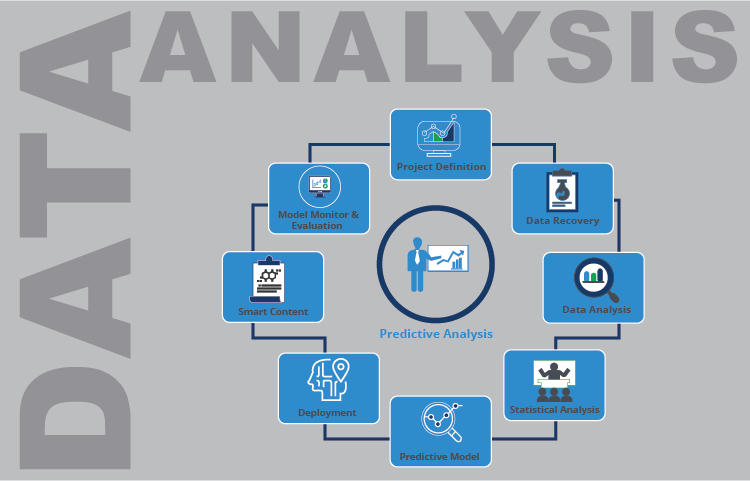
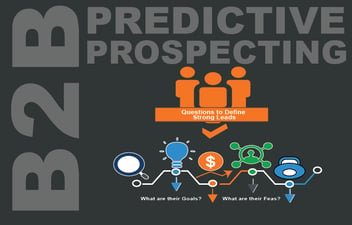
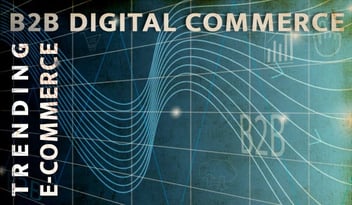
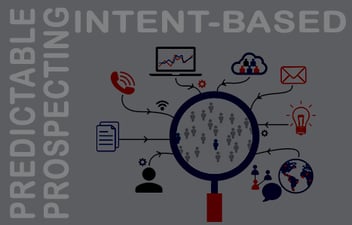
Leave a Comment